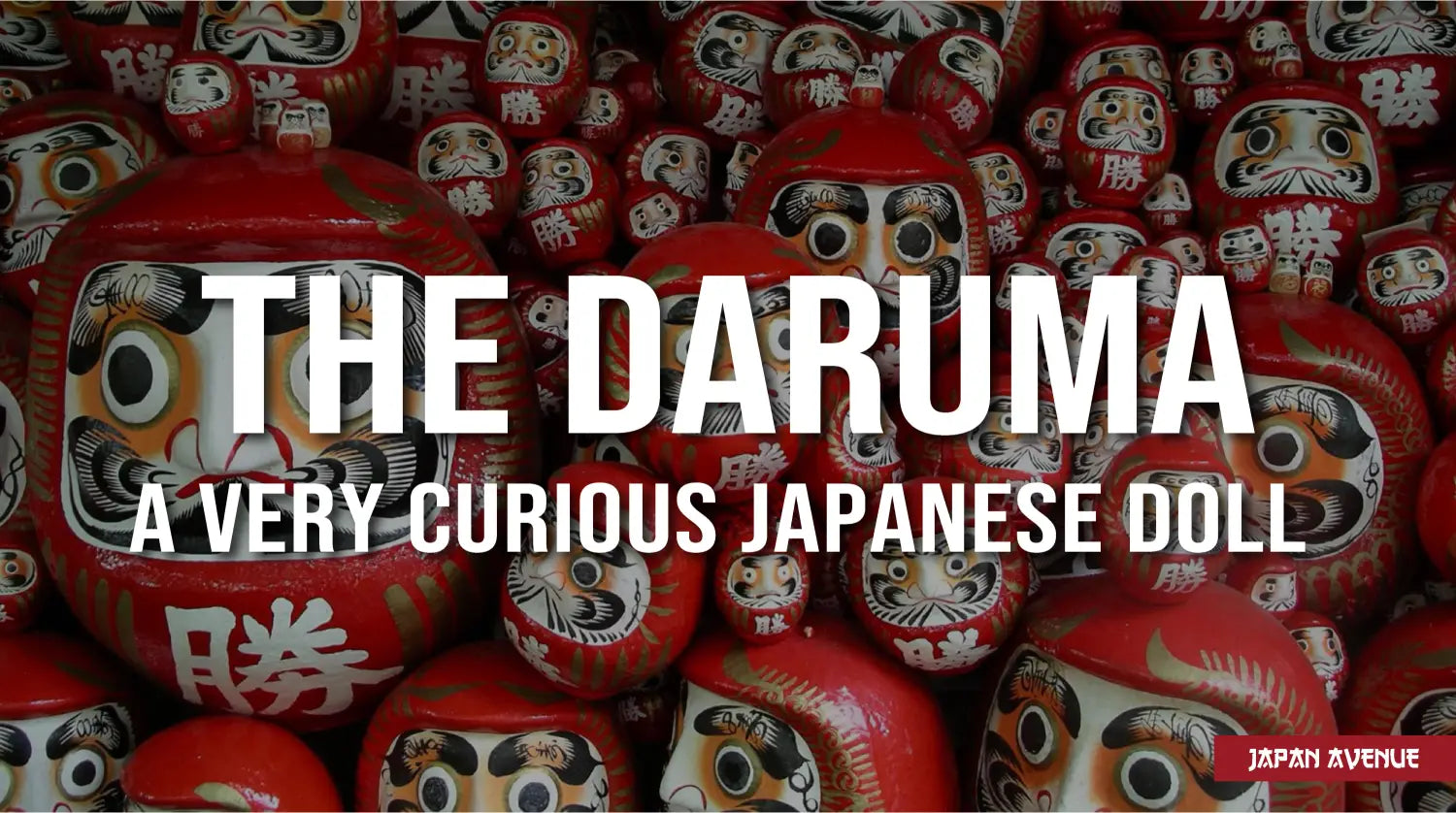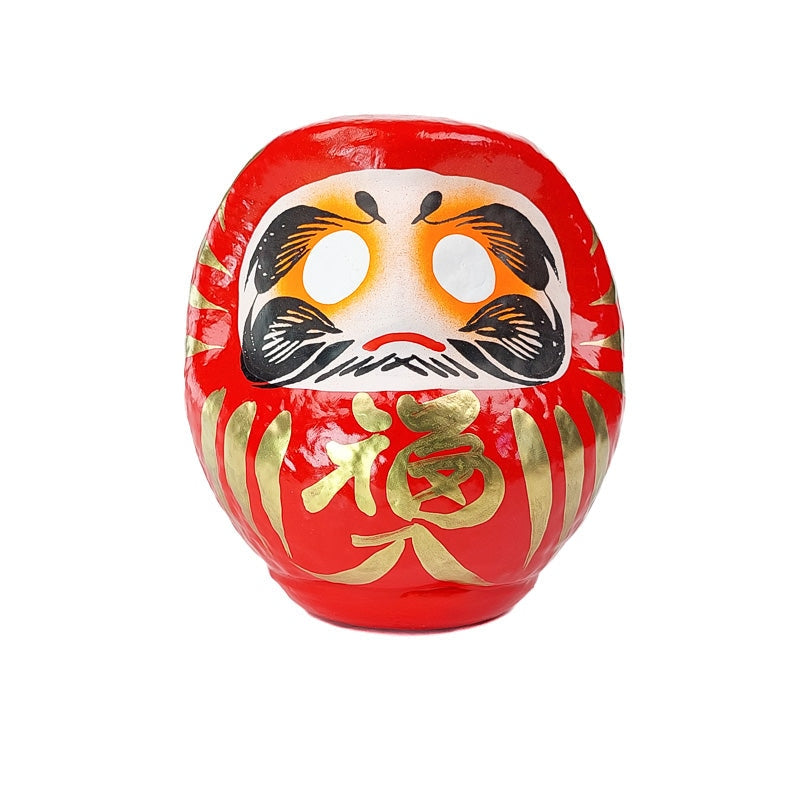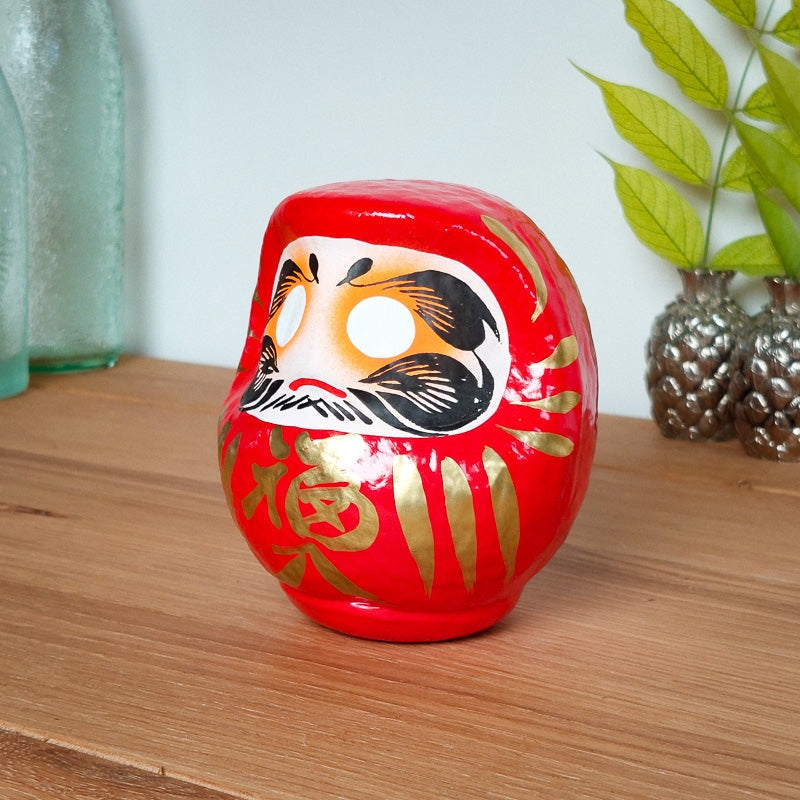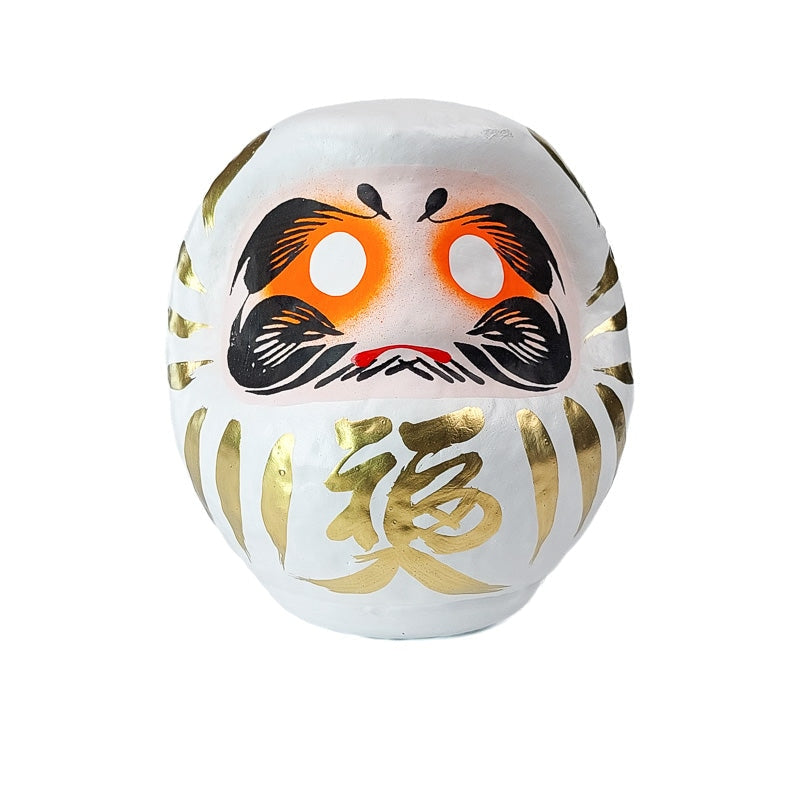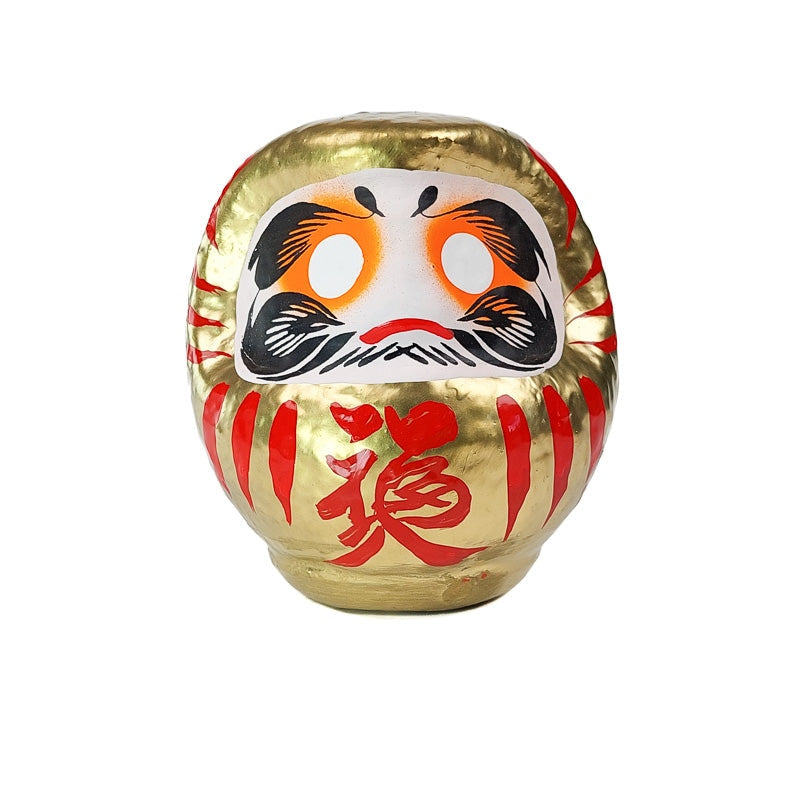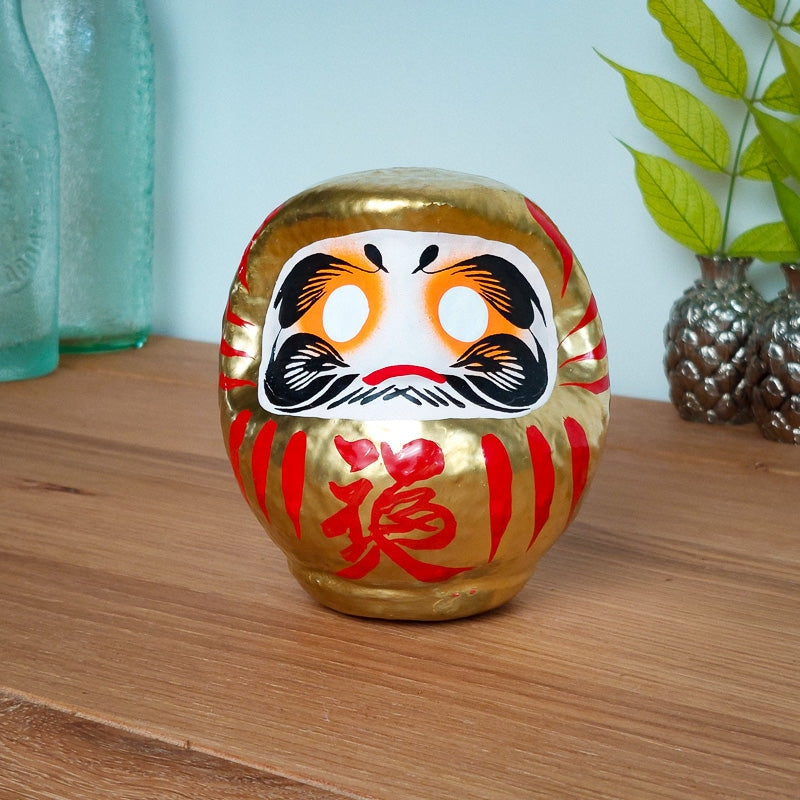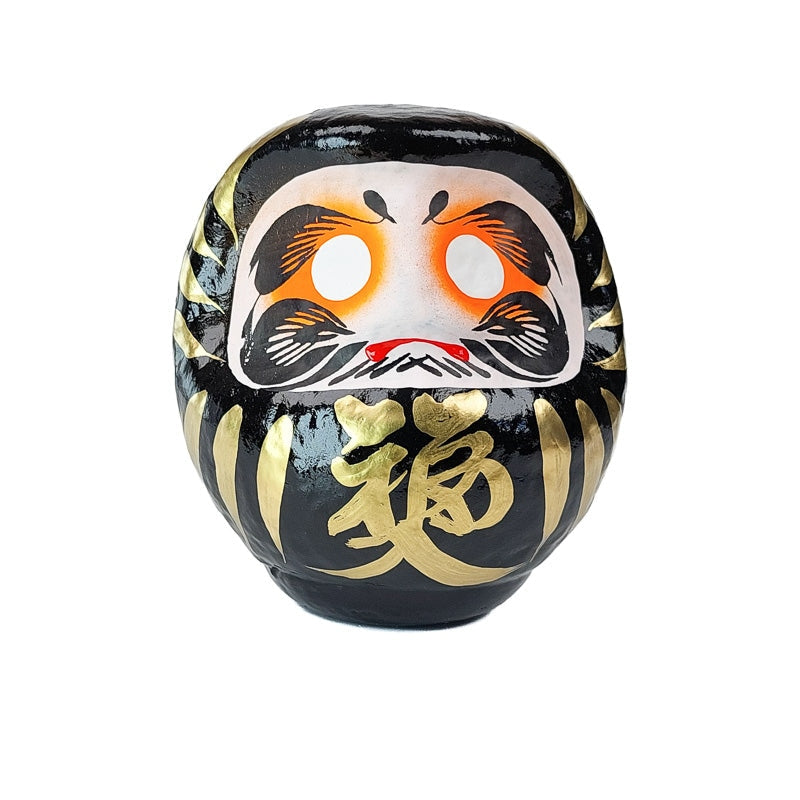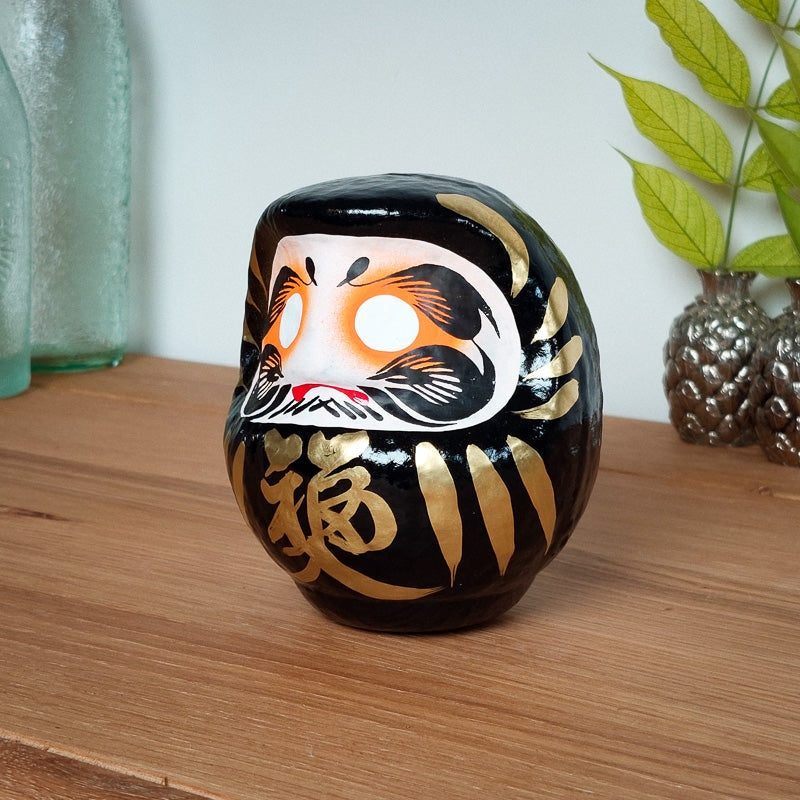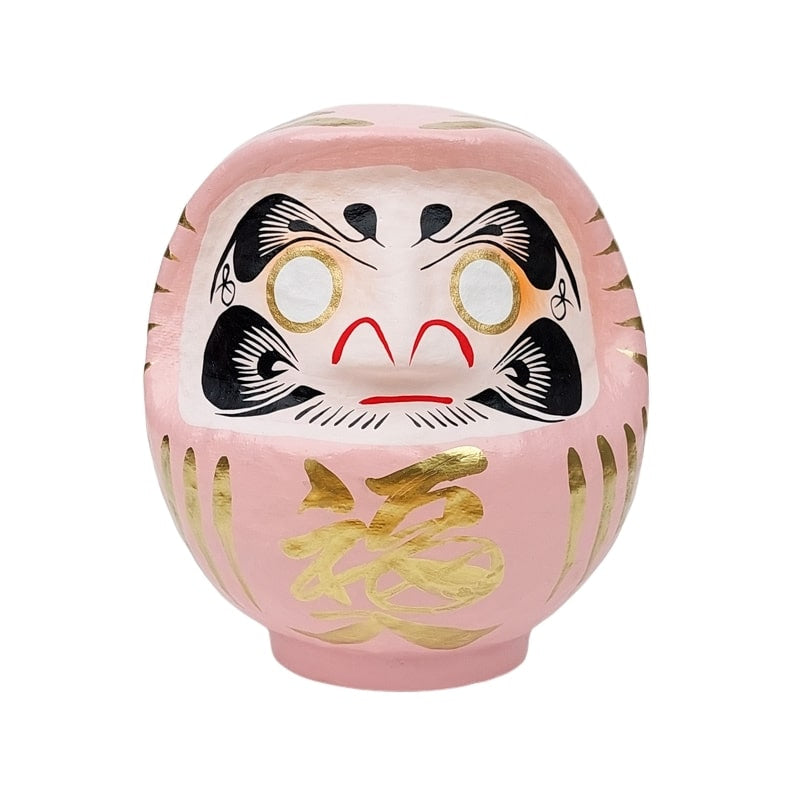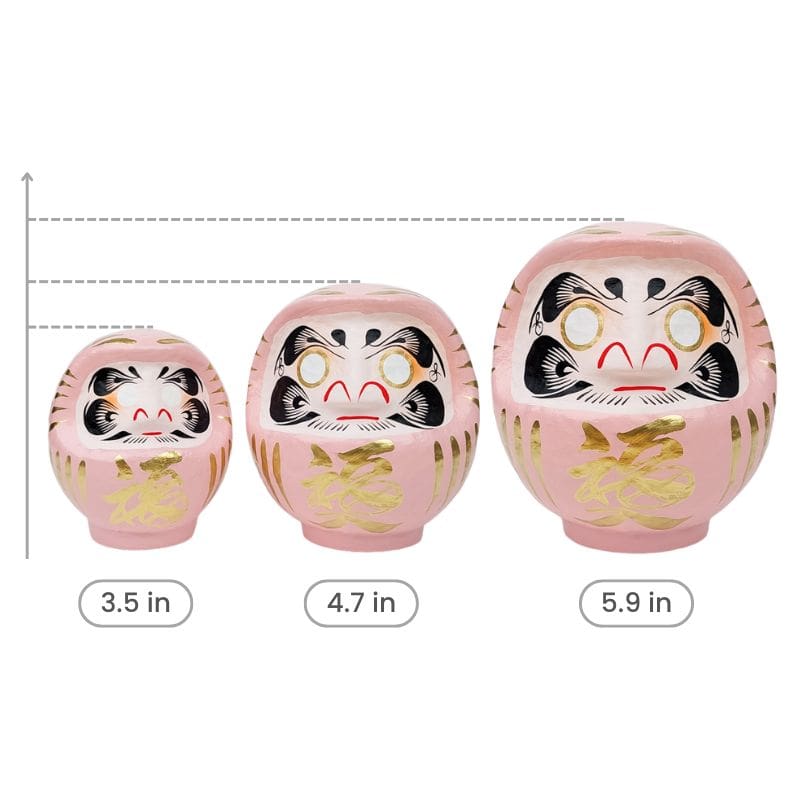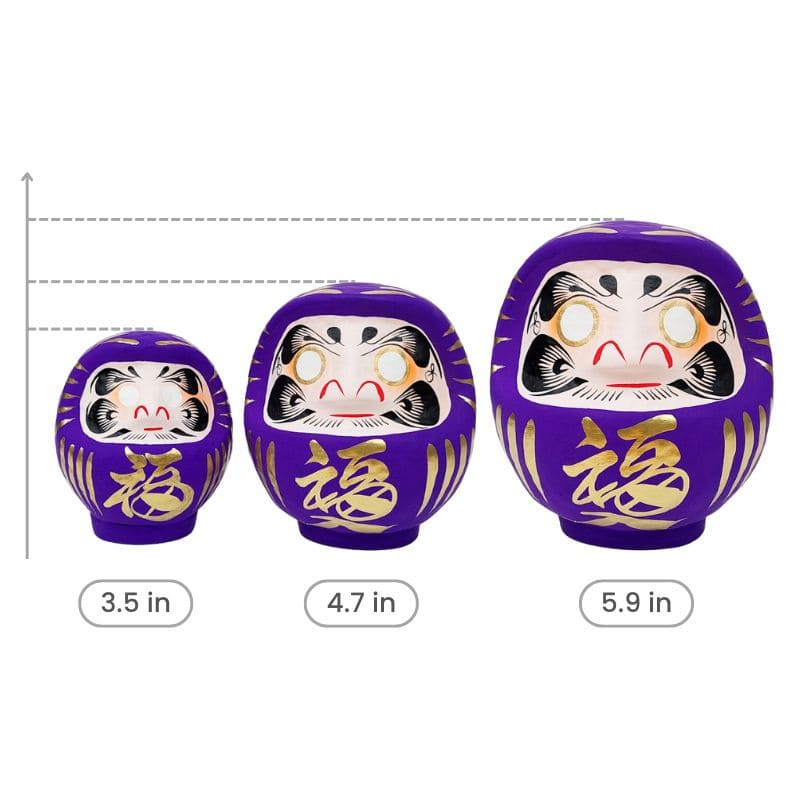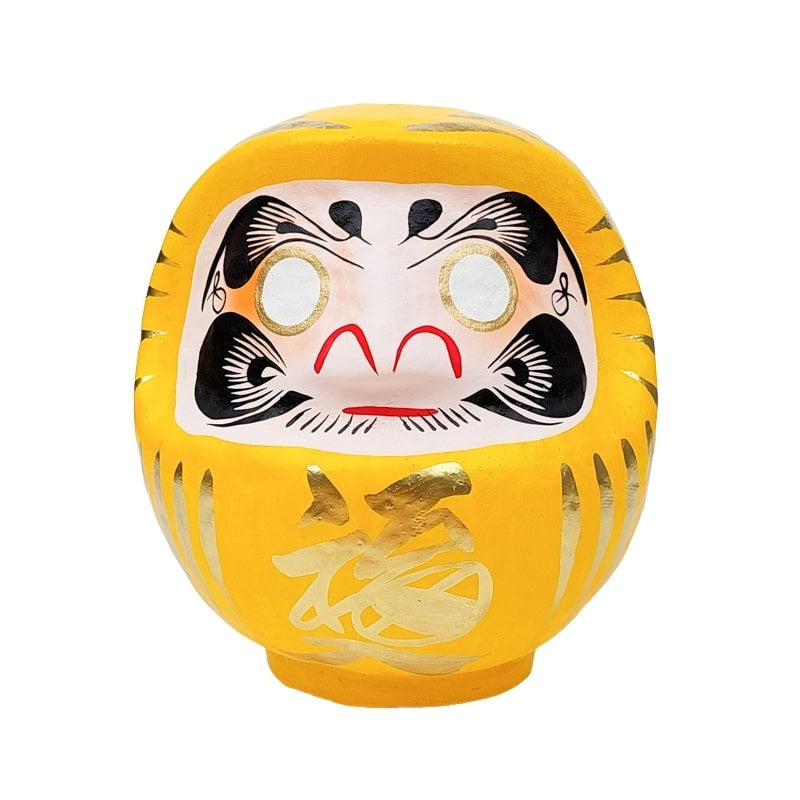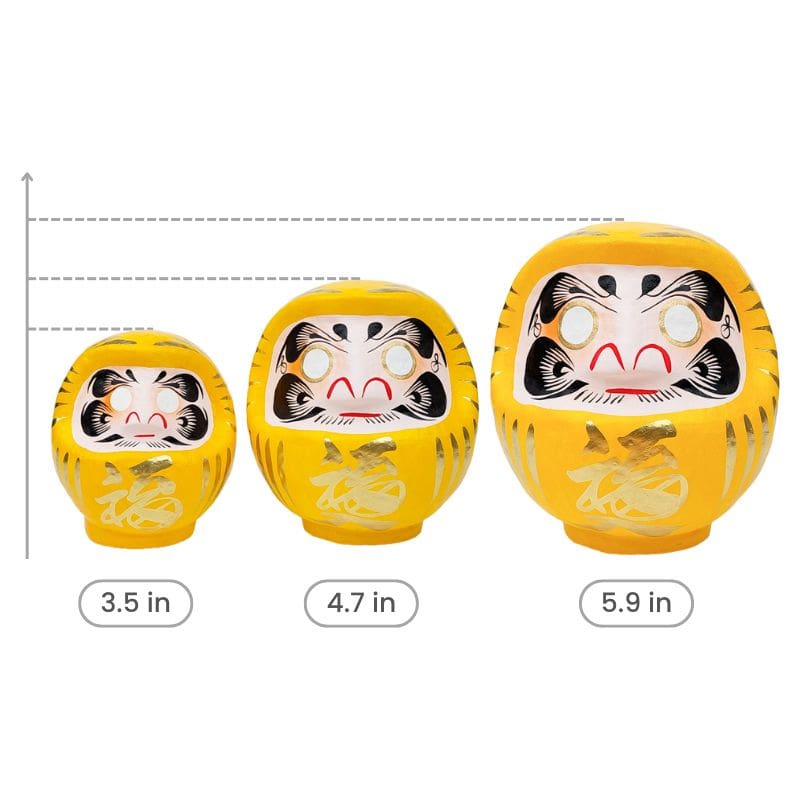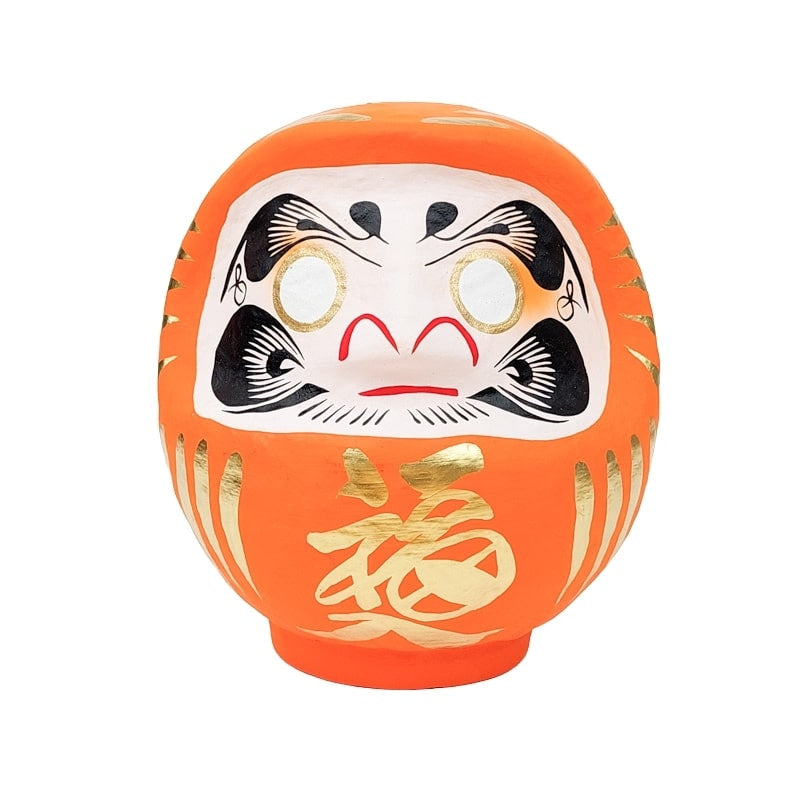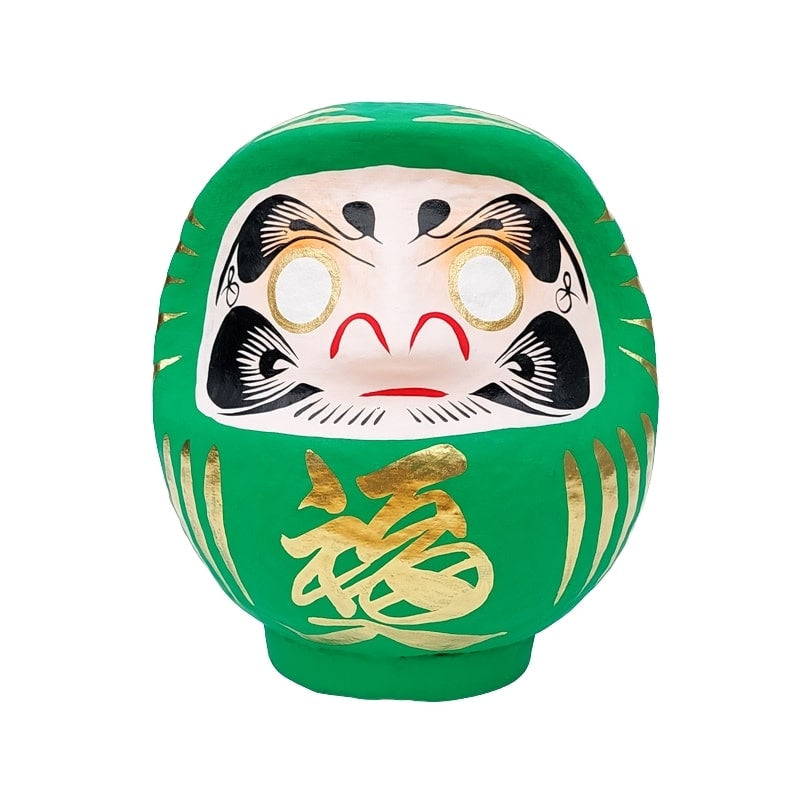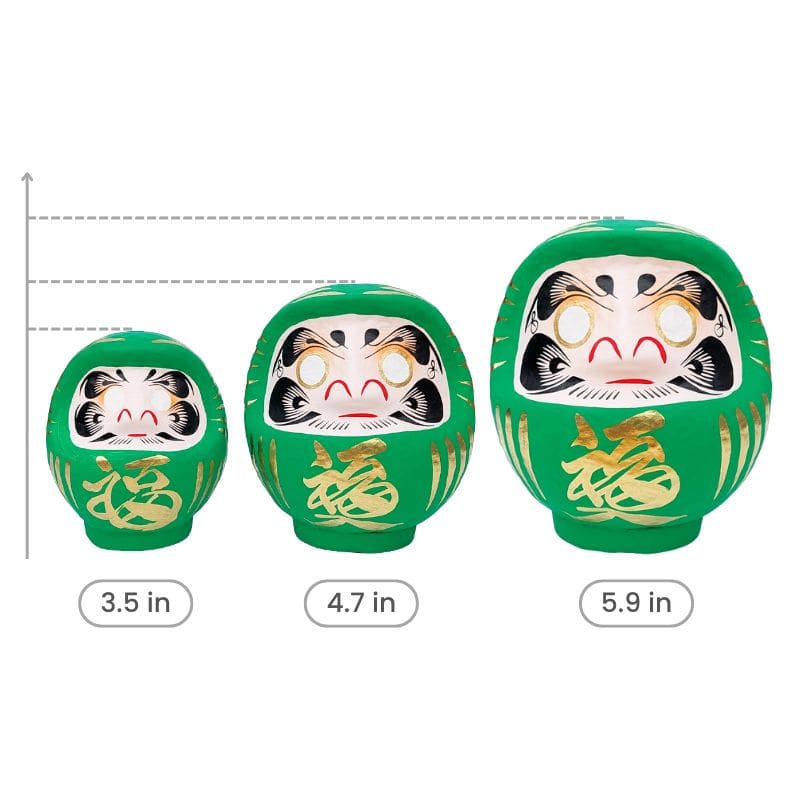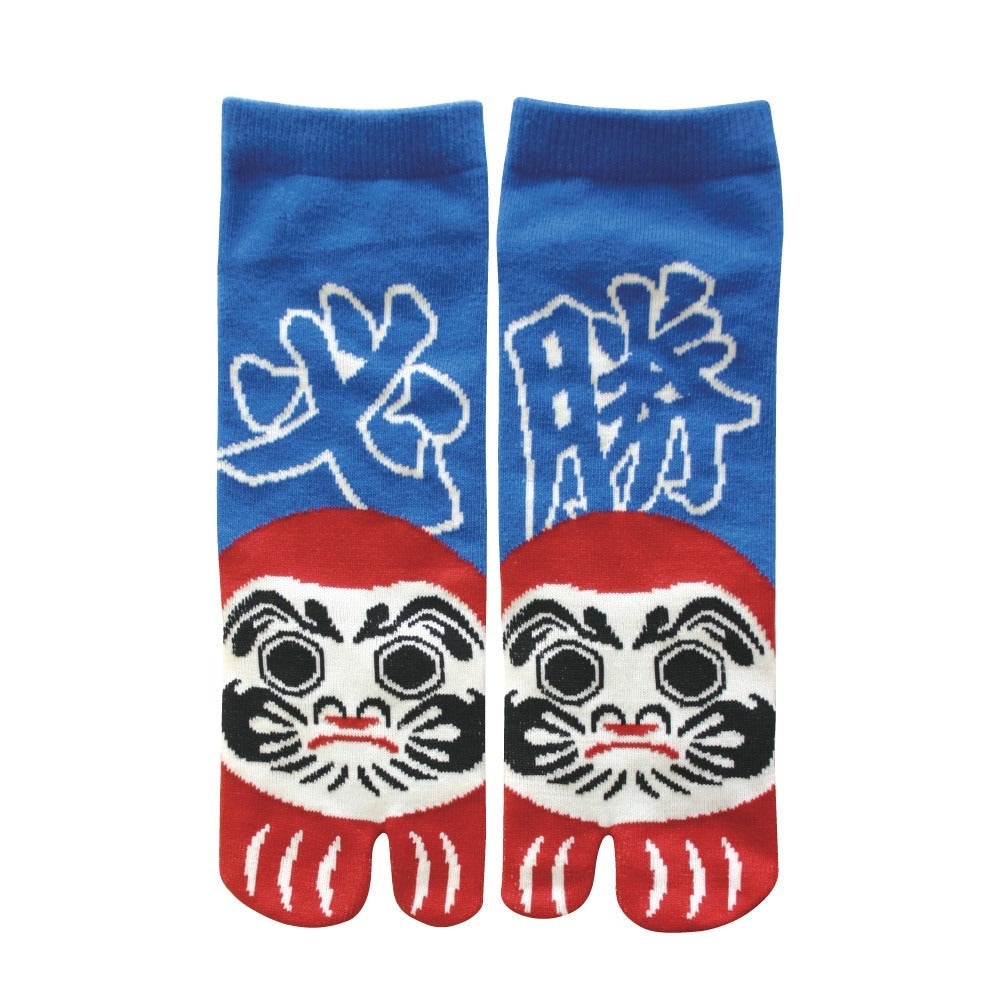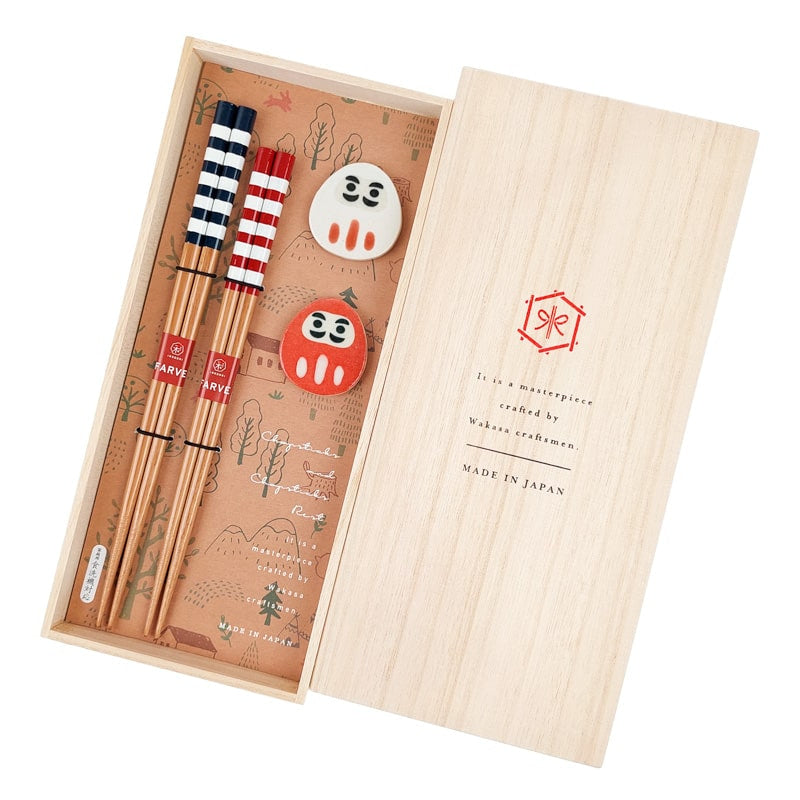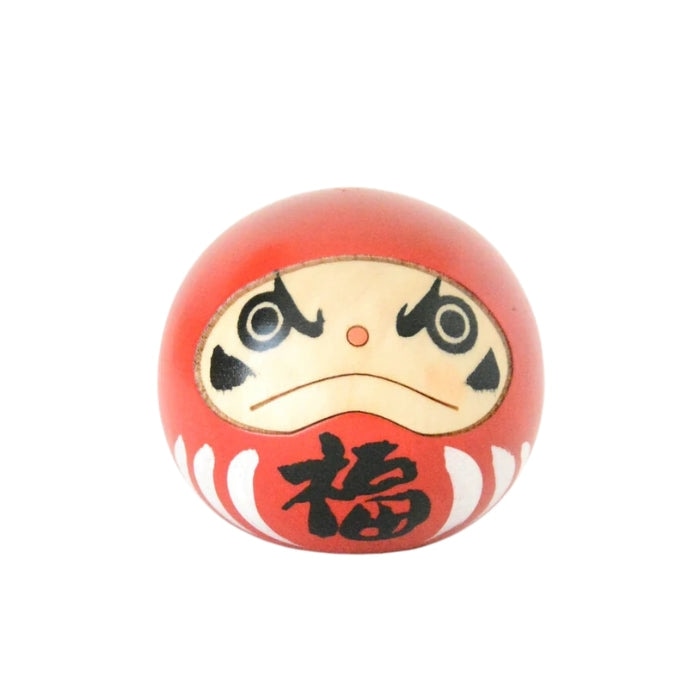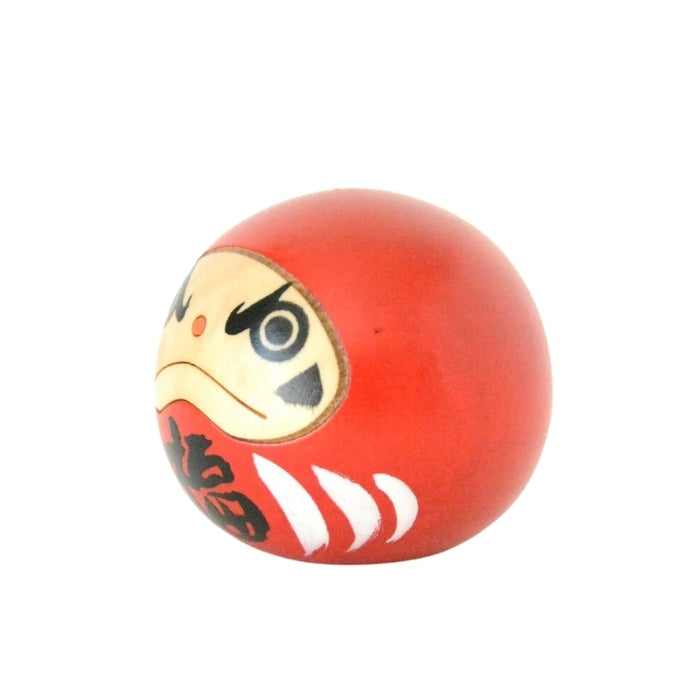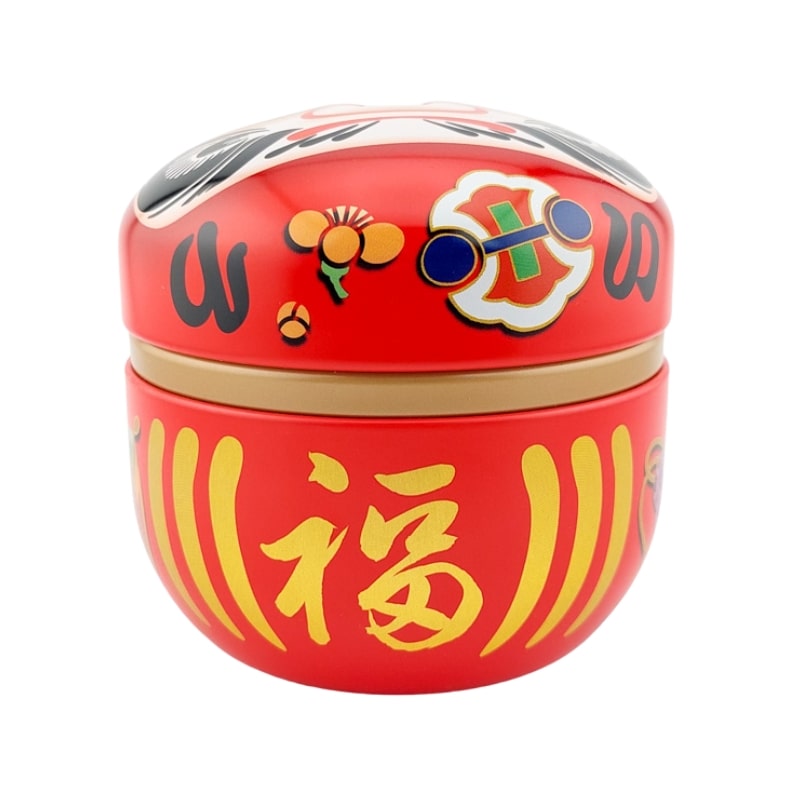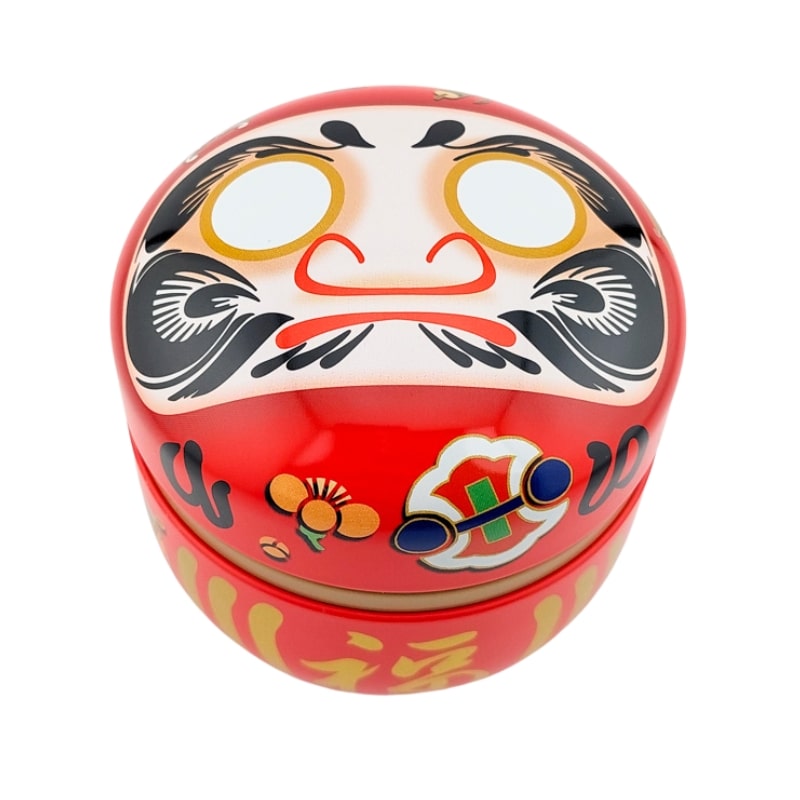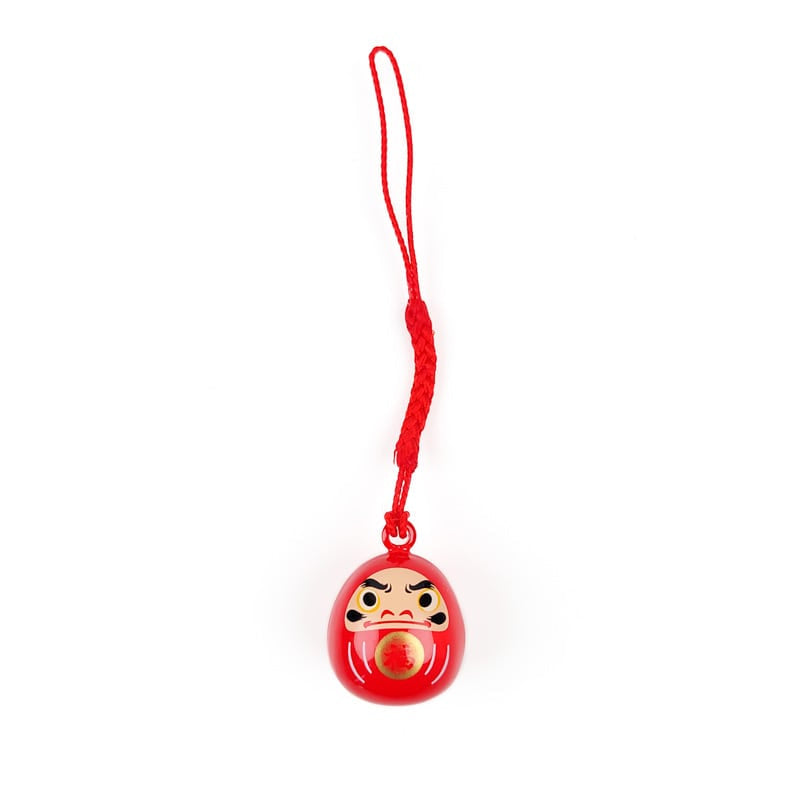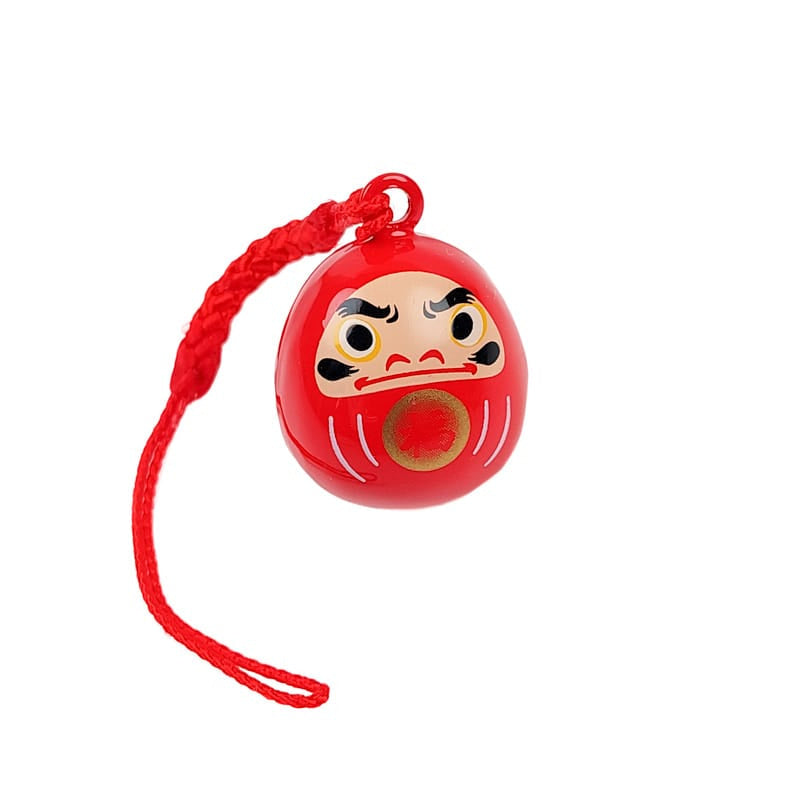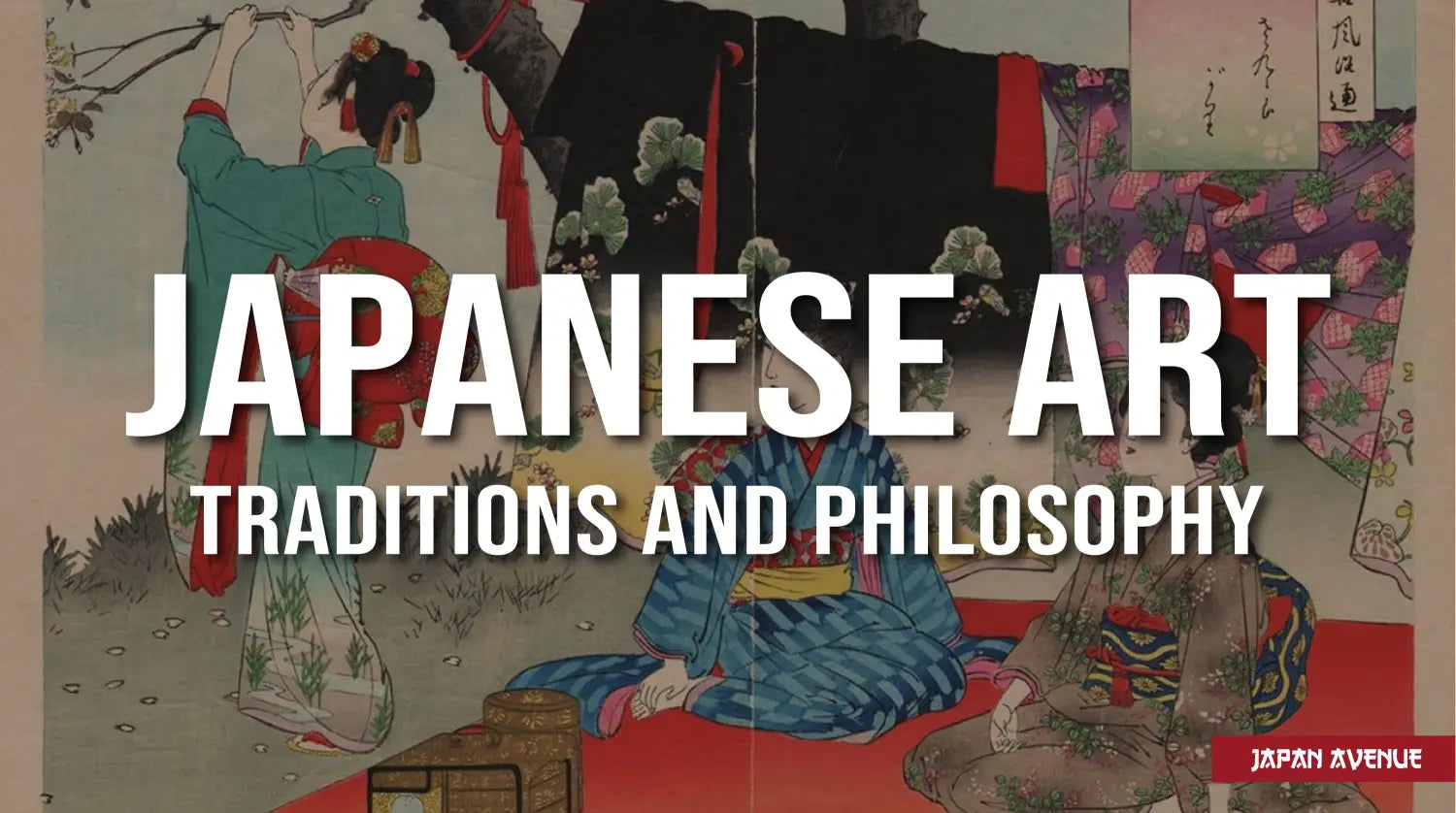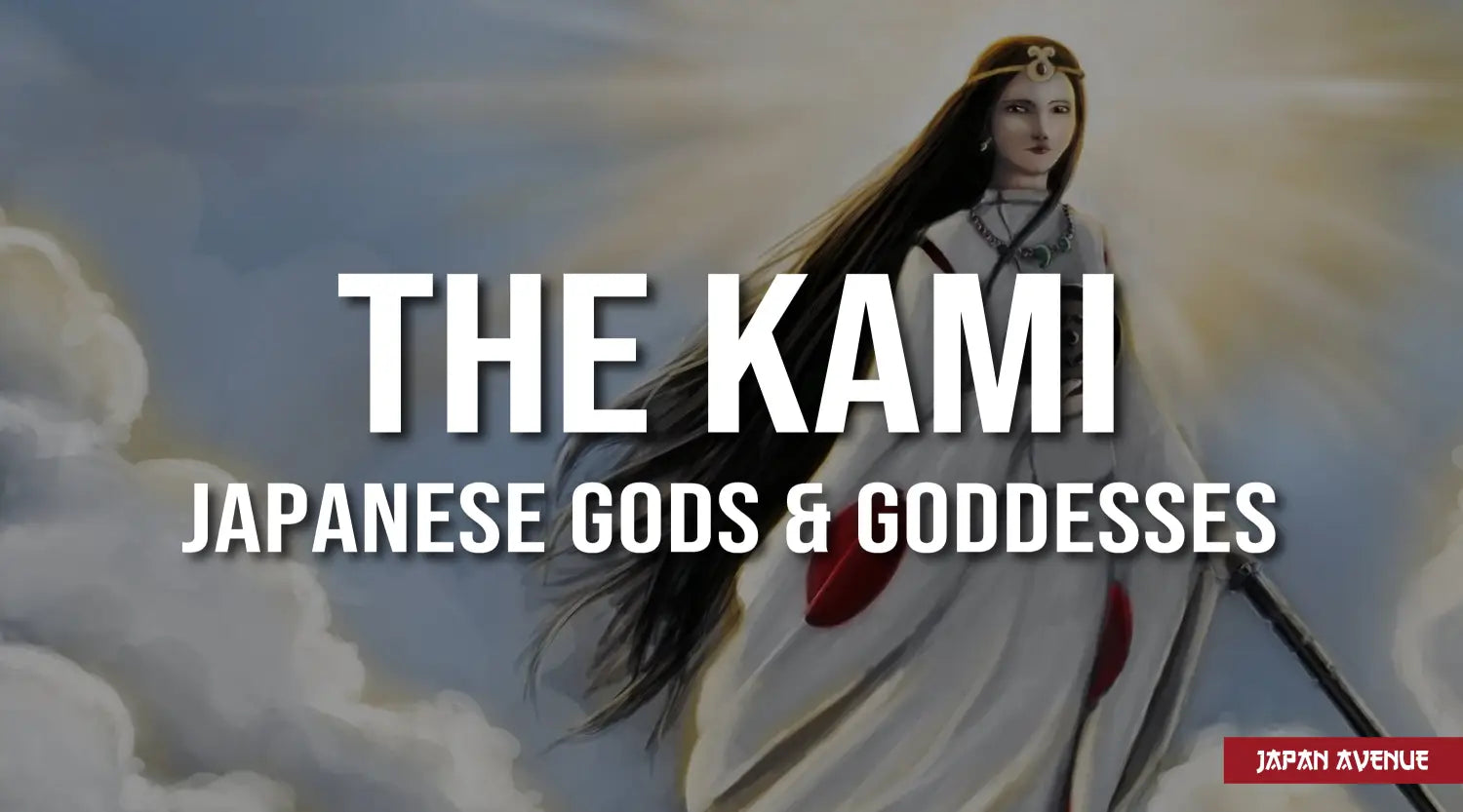The cultural richness of Japan is something to be proud of. Between myths and traditions, lovers of folklore and fans of Japanese lucky charms have plenty of reasons to be satisfied. In this article, we are going to take a closer look at the Daruma, a very curious Japanese doll due to its shape, but also due to its history.
The Daruma (だるま) is a Japanese doll made of paper mache. Its round shape and its wide opened eyes are inspired by the Buddhist monk Bodhidharma. Symbol of perseverance and success, the Daruma allows to realize your dearest wish.
But how about its history? Why does this doll have neither arms nor legs? How to use the Daruma to fulfill your wish? 🤔
A lot of questions that will be answered in the continuation of this article. Let's get started! 👇
What is a Daruma doll?

The Daruma is a Japanese doll, traditionally made out of paper mache and without arms or legs. With its red color ( but it can also be of a different color ), its mustache and its wide opened eyes, the Daruma is easily recognizable.
In Japanese culture, this lucky charm figure symbolizes perseverance, luck and success. But where does this curious doll come from? What is its history?
What is the history of the Daruma doll?
The story of the Daruma doll is closely related to that of the Buddhist monk Bodhidharma, the initiator of Zen Buddhism in Japan. This monk, originally from India, is said to have lived between the 5th and 6th century A.D., but his story is intertwined with legends and exists in different versions (as most Japanese stories do), which leaves a mystery around his origins and life.
Nevertheless, most stories tell that, during his pilgrimage, the monk Bodhidharma paused for some time in a Shaolin monastery in China where he developed the teaching of Chan Buddhism as well as the practice of martial arts, Shaolin kung fu 😮!

Once on the road again, he decided to stop in a cave and meditate until he reached enlightenment. Thus, he spent nine long years observing the cave wall, in a sitting position, without moving and without closing his eyes. 👀
|
One legend tells that at the end of the seventh year, the monk fell asleep from exhaustion. 😴 When he woke up, he felt so angry at himself that he decided to cut off his eyelids so that he would never fall asleep again. He perceived this weakness as a lack of discipline and hoped to make amends to the gods by mutilating himself this way. According to the legend, green tea plants would have sprouted at the place where he would have thrown his eyelids. Ever since, Buddhist monks have been fueling green tea in order to stay awake and be able to meditate for long hours. 🍵 |
After staying in the same sitting position for nine years without moving an inch, the monk Bodhidharma lost the use of his limbs. Some stories say that his legs and arms atrophied, others say that they would have fallen off his body outright.
You now understand why the Daruma doll is represented with neither arms nor legs. The intense expression of the Daruma, with its two wide opened eyes without eyelids, embodies the struggle, determination and perseverance of the monk Bodhidharma.
Daruma's characteristics
A rounded body, without arms or legs
The absence of limbs on this figurine is related to the story of Bodhidharma, as we have already discussed this point above 👆 no need to repeat it...
However, there is a second explanation (complementary to the first). At its origin, the Daruma doll was designed to always return to its initial vertical position. You all know what a roly poly toy is? Same principle. No matter how hard you push it, it will always get back up.
|
The Daruma perfectly illustrates the Japanese proverb "nanakorobi yaoki" which can be translated as "fall seven times, get up eight times". In other words, it is important to remember that, no matter how many times you fall, always get up to achieve your goals. The Daruma is a lucky charm, but above all it is a powerful symbol of perseverance. 💪 |
Large and empty eyes
The most remarkable feature of this doll - as you might have noticed - are its two wide opened eyes, 👀 without eyelids and pupils. The explanation for this is related to the story of Bodhidharma and when he tore off his eyelids so that he wouldn't fall asleep again.

Thick eyebrows and imposing moustache
The facial hair painted on the doll represents the eyebrows and the beard of the monk Bodhidharma, but there is also another meaning behind it...
If you observe the shape of the eyebrows carefully, you can imagine that they are two cranes, face to face. Similarly for the whiskers, their shape is supposed to remind the one of a turtle ( more difficult to detect, we agree 😅 ). In Japanese culture, these two animals symbolize longevity.
Besides, a Japanese proverb says that "a crane lives 1000 years, a turtle 10 000". Longevity has an important place in the Japanese mind, and many symbolic elements refer to this.
Kanji inscriptions
On the belly or on the sides of the figurine, you can find Japanese inscriptions in kanji. Most of the time, they can be translated as "luck", "perseverance", "wealth"... or other similar words related to an area of life in which our goal or wish fits.
Some people will write their wish on the doll in order not to lose sight of it or to make their wish more official to themselves as well as to the Gods.
| ❓ Did you know? The Darumaka pokémon is greatly inspired by the daruma doll. Furthermore, when Darumaka appeared in episode 665, he was introduced as "a pokémon that always stays focused and never gives up, many people think it is a lucky pokémon". |
The red color of Daruma
Although Daruma are available in all kind of colors nowadays, the most popular and traditional color is red. The reason behind this color choice is still a mystery, but several theories attempt to explain why Daruma is red in color. 🤔
A first theory presumes that Bodhidharma, after his journey to China, wore a long red robe - similar to Chinese Buddhist monks - during his nine years of meditation in the cave. As the figurine is a representation of this legendary monk, this explains its red color.
According to another, much darker theory, the red color may have originated from a period of devastating smallpox epidemics in the country. In a culture as superstitious as Japan's, this disease could only be a "curse" sent by a vengeful God. According to a popular belief, red was the preferred color of the God of smallpox, with the result that people began to wear red clothes to get into the God's good graces and be spared from the disease. 🙏 Thus, the red color of the Daruma doll was used to ward off diseases and help in healing.
Besides, Daruma is a common gift given to sick people as a way to wish them a good recovery.
How to use the Daruma?

Whether you are superstitious or not, the Daruma doll is an excellent way to set a goal - and achieve it.
This Japanese talisman is a type of lucky charm, somewhere between magic and psychology, that allows you to fulfill a wish. The use of this doll can be compared to a "ritualization", a materialization of the given objective in the form of a (slightly creepy) doll with wide opened eyes.
The use of the Daruma is very simple and can be resumed in five steps:
- Clearly define your wish or goal to achieve. The more specific you are in formulating your wish, the more likely it is to be fulfilled (wishing for a life full of happiness is nice, but it is not specific. Instead, think about what action will allow you to achieve that happiness). Naturally, choose a goal that is achievable and quantifiable in terms of actions.
- Paint one of the two eyes in black. Right or left eye? It doesn't matter, as long as you have your wish well formulated in mind when painting the iris of the eye. By completing this step, you seal your own commitment to the goal you have set for yourself.
- Place the daruma in a prominent place at home, on top of a shelf for example, with the goal of being able to see it every day. The presence of this Japanese doll will help you keep your goal in mind and reinforce your determination. Little advice, put it rather in your living room than your bedroom, because waking up at 3am and seeing this one-eyed doll staring at you with its intense gaze, can be kind of creepy. 😂
- Take action without losing sight of your goal. A belief tells that the doll contains a god who has been robbed of his sight. By painting the first eye, you make it one-eyed. Now it's up to you to work, to take action and to show courage, determination and perseverance to reach your goal and thus, to be able to give back the sight to the god stuck in the doll. Keep in mind that daruma rewards sacrifice and unwavering strength of will.
- Paint the second eye once you have reached your goal or fulfilled your wish.
After a year, the tradition is that the Daruma is brought back to the temple where it was bought to be burned, whether you achieved your goal or not. It is believed that the power of the Daruma doll will fade after one year.
If you have reached your goal, then this is an opportunity to move on. If, on the other hand, you failed to achieve your goal, burning it does not mean that you give up, but that you will seek for another way to achieve your goal (or start over with a new Daruma).
|
⚠️ You can only have one Daruma at a time. Once you have painted your doll's second eye, you can buy another one and make a new wish. The advantage of this rule is that it forces you to focus on one goal at a time. You can devote all your time and energy to the accomplishment of a given task and thus, put all the chances on your side to succeed. |
Different daruma colors and their meaning

Nowadays, you can find Daruma dolls in all colors, each of them corresponding to a particular area of life.
The meaning of each color can be different depending on the manufacturer or the region, no one has ever really agreed on this point. 🙃 Originally, daruma is red, and then over the years, colors have diversified as well as the meanings - probably for some purely commercial reasons.
However, here is a list of different Daruma colors and their most common meanings:
- Red: Best of luck and good fortune.
- White: Purity and balance.
- Golden: Money and glory.
- Black: Protection against evil spirits.
- Green: Health and physical condition.
- Orange : Academic success or prosperity.
- Blue : Career success.
- Purple : Personal development or health.
- Pink : Love & Romance.
| We find about the same color meanings for another well known lucky charm: the Maneki neko. To learn more about this Japanese cat that has conquered the world, check out our article What does Maneki Neko mean?😺 |
How to make Daruma dolls

The earliest production of Daruma dolls dates back to the 17th century. The monks of the city of Takasaki, in the Gunma prefecture, had the idea of creating paper mache talismans with the effigy of the monk Bodhidharma in order to bring luck to the farmers. Their income depended heavily on luck at harvest time and - as Japanese culture is very superstitious - having a lucky charm was definitely not to be underestimated. 😄
Later on, peasants started to make daruma dolls themselves and sold them to supplement their meager income in times of economic hardship. 💸
A few decades later, the use of the daruma doll gained in popularity and expanded to the rest of the country. These days, Takasaki City still produces more than 80% of the daruma dolls made in Japan.
The Daruma of today
The traditional version of the daruma doll is made of washi paper, a sort of Japanese papier-mâché, with a hollow interior to make it easier to burn. The original size is about the same as a basketball.
It is not uncommon to see a daruma doll sitting in the corner of a room, often on a shelf, in a restaurant, a shop or a house.
Nowadays, the Daruma can be found in different forms: stuffed toy, key chain, cell phone case... or even as a Daruma piggy bank to store your savings while adding an original Japanese touch to your decoration.

